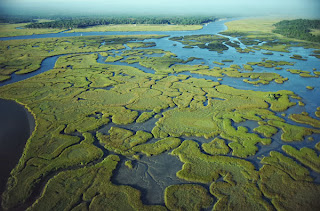In 1947, Congress established the Everglades National Park.
The idea was that the Everglades would be “permanently reserved as a wilderness
and no development of the project or plan for the entertainment of visitors
shall be undertaken which will interfere with the preservation intact of the
unique flora and fauna and essential natural conditions now prevailing in the
area” (Hendrix). As a result of the agricultural and urban needs,
“Water Conservation Areas” were created to hold water that could be utilized in
drier periods of the year. Unfortunately, almost all of this stored water was
used to satisfy human needs rather than preserve the natural ecosystem. The
National Park Service, alarmed as this unexpected turn of events, pushed
Congress to guarantee them over 320 million cubic meters of water on a month to
month basis. Congress eventually agreed and funded the construction of new
canals and levees that could provide this much needed water to the park. In
addition, the interference of the natural water flow rates has led to a huge
decrease in species that rely on this cycle. The Everglades are not host to a
particularly diverse number of species, and the existing species that cannot
adapt to the rapidly changing conditions are likely to die out rapidly. Park
fish and wading bird populations have already suffered from this change, as
well as from human hunting and fishing. The Everglade National Park protects species
such as the Florida panther, manatee, bald eagle, peregrine falcon, and
American crocodile. The park has been generally successful in maintaining
pseudo natural balances between wet season water levels and dry season fires,
as well as setting aside areas that are completely off limits to humans. The
park also contains areas of inland waters such as lakes, canals, bays, and
rivers that are helping maintain fish populations, despite rapidly decreasing
numbers. One last significant issue that is affecting the status of the
ecosystem is the invasion of exotic species. Specifically, certain tree populations
have created dense stands that choke out native species. For example, the
Brazilian Pepper has formed in dense patches and has even begun to take over
agricultural areas. The National Park Service has found it difficult to remove
this particular species because, unlike many tree species, “it fruits in the
winter when migratory birds eat and carry the seeds throughout the park”. In
conclusion, although the Everglades National Park is a large established area
of natural land, external factors are leading the destruction of the ecosystem
it was created to protect.

Source: http://news.mongabay.com/2005/1005-gator.html
Agriculture in the Everglades areas has led to ecosystem destruction.
http://www.nicholas.duke.edu/wetland/graphics/Eaa1.jpg



